

The Devil was an omnipresent figure in medieval Christian Europe and the Renaissance. This period was marked by strong religious influence where the devil symbolized evil and temptation. The Bible mentions the devil several times without ever describing his physical appearance, thus leaving free rein to the imagination of medieval artists. Inspired by classical art and local folklore, these artists created varied representations of the devil, thus influencing the design of the DEVIL card of tarot.
The first and last book of the Bible present the devil in the form of a serpent or a dragon. In chapter 3 verses 1 to 5 of the book of Genesis, the serpent in the garden of Eden tempts Eve to disobey God. Although the serpent is not explicitly identified as the devil, it is described as an evil creature. In the book of Revelations, the devil is clearly identified as a dragon. Chapter 12 describes the struggle between Saint Michael and the dragon, where the dragon is cast out of heaven and identified as the devil and Satan.
According to Christian tradition, the devil, also known as Satan or Lucifer, is considered a fallen angel. Lucifer was originally a high-ranking archangel created by God, but his pride and ambition led to his fall. This rebellion resulted in a celestial war where Lucifer and his rebellious angels were defeated and expelled from paradise.
The consequences of this fall are that Lucifer became Satan, synonymous with darkness and evil. A third of the angels followed him in his rebellion, becoming demons condemned to eternal fire. Several theological theories exist on the exact motives of Lucifer's rebellion, including the desire to be like God, the refusal to bow before humanity, or jealousy towards humanity. These interpretations warn against the dangers of pride and rebellion against God.
European Christian stories about the devil have been illustrated in many ways, influencing representations in tarot. The archangel Michael fighting the dragon and casting it out of heaven was a popular theme in medieval art. This imagery culminated in Renaissance masterpieces, such as those by Raphael and Pollaiuolo. Early Renaissance frescoes of the Last Judgment, like those of Giotto, depict the devil as a gorilla king monster, ruler of hell, tormenting and eating sinners.
The representation of the devil in medieval folklore and Renaissance art influenced the design of the DEVIL card of tarot. The devil is often depicted as a gorilla king monster, ruler of hell, tormenting and eating sinners. A typical example is Giotto's devil, who dominates hell with a hairy face, goat horns, deer legs, and an almost human body.
The tarot devil card acquires goat-like characteristics inspired by the god Pan and satyrs in classical art. Pan, god of the forests and wilderness, and satyrs, embodiments of sensuality and self-indulgence, horrified good Christians. These figures were linked to the Etruscan gods of the underworld, such as Charun, depicted with attributes similar to those of the tarot devil.
The bird claws of the tarot devil are inspired by Greek harpies, spirits embodying gusts of wind and depicted as humans with wings and lower bodies of birds. Representations of harpies in medieval manuscripts closely resemble those of classical mythology, thus influencing the characteristics of the devil.
The most common devil in medieval art is a human-animal hybrid with a hairy body, goat horns, animal ears, and bird claws for feet. This devil is neither the fallen angel Lucifer nor the monster of hell, but a common demon who leads into temptations and torments with petty annoyances. In the New Testament, the devil is described as a liar, a deceiver, a tempter, and a rebel against God.
The earliest representations of the devil as a tempter and torturer come from illuminated manuscripts depicting the temptation of Christ. For example, the devil in the Saint Albain manuscript has a human posture but the fur on his legs, the tail, the claws on his feet, and the animal ears remind that the devil is a fallen angel.
In short, the DEVIL card of tarot is a complex mix of religious, mythological, and folkloric symbols. Christian, classical, and medieval influences have combined to create a representation of the devil that is both terrifying and fascinating.
The Devil does not appear in the hand-painted cards of the 15th century. There is speculation that these cards were omitted or removed from custom decks because they were too unpleasant. But many cards are missing in these very early decks, so they may not be significant. It is noteworthy that the Milanese tarot Visconti-Sforza is almost complete except for the Devil and the Tower. It is therefore possible that these cards were in the original deck but were later removed for some reason.
A few years before Francesco Sforza and his wife Bianca Maria Visconti commissioned their cards from the Bembo workshop, Bonifacio Bembo illustrated a book based on the legend of Sir Lancelot. A devil with two hairy faces and giant wings figures in the story. In the 1420s, Bianca's father, Duke Filippo Maria Visconti, ordered the completion of a book of hours that had been interrupted a quarter of a century earlier by the artist's death. This devil, rendered by Belbelo da Pavia, resembles the typical late medieval devil: a hairy body, goat horns, talons for feet, and holding a two-pronged flail, a favorite torture instrument of the Inquisition.
The earliest printed tarot cards depict devils who seem mischievous rather than threatening. The face on the belly of the Budapest Devil with red angel wings might be attached, might be a theater costume. Medieval theater and its representations of the Devil were ways to convey moral and religious lessons to spectators. The Rosenwald Devil seems to wear a costume of poorly drawn leaves or fur. The devils have goat horns and seem rather cheerful, playful, and carefree. The Inquisition flail has evolved into a trident, as later in the century.
The French Renaissance master craftsman decided to totally renew the iconography of the Devil while retaining certain standard aspects. With Jean Noblet, the Devil takes a human form without fur, borrowing details from Italian cards. Rather than giving him goat horns, the Devil seems to have deer antlers attached to a headdress, thus resembling ears. This Devil has extravagant wings, which here become more like bat wings. The Devil's genitals are exposed, and he is clearly hermaphrodite since he has female breasts.
The only thing truly preserved is the Devil's double face, with a face at the head and another at the lower abdomen. Jean Noblet also kept a kind of trident or fork in the Devil's hand. For the rest, everything seems quite new. The bat wings, very curious and interesting, are beaded with drops of blood or red dots evoking drops of blood. The Devil is perched on a cylindrical pedestal, and it is possible to make a connection between this cylinder and the tower depicted in the next card, the Maison Dieu.
At the feet of the Devil and the pedestal are two hybrid humans, half-man, half-animal, and half-man, half-woman. They seem to have their hands behind their backs, probably tied, and wear a collar connected by a rope to a ring at the foot of the pedestal. The common point between the Devil and his two minions is that they are all half-man, half-animal and wear deer antlers.
The scene is very similar to that of the Pope card. In this card, the Pope overlooks two disciples and raises his hand in a sign of blessing. Similarly, the Devil raises his hand, not in a sign of blessing, but with an open hand, which may denote a form of greeting or welcome.
Jean Noblet's Devil also stands out for his posture and facial expression. Unlike traditional representations of the Devil, often frightening and menacing, this one seems almost welcoming, with a raised hand as if to greet or invite. This contrast with more conventional representations of the Devil could reflect a different approach to the symbolism of evil and temptation. The deer antlers, replacing the goat horns, add a touch of wild and untamed nature to this figure.
The two minions at his feet, half-man, half-animal, and half-man, half-woman, add an additional dimension to the card. They seem to be chained or bound, which could symbolize servitude or submission to the Devil. Their posture and hybrid appearance reinforce the idea of the loss of human identity and transformation under the influence of evil. The collars and ropes that connect them to the Devil's pedestal could also suggest a form of control or domination exerted by the Devil.
The pedestal certainly indicates the Devil's oversized ego and his desire for domination.
The connection between the Devil's cylindrical pedestal and the tower of the Maison Dieu is also intriguing. The Maison Dieu, often interpreted as the tower, represents destruction and transformation. The Devil's pedestal could symbolize an unstable base or foundation that is about to collapse, just like the tower of the Maison Dieu. This connection between the two cards could indicate continuity in the theme of transformation and the revelation of hidden truths.
The bat wings could oppose the feather wings of the other three angels of the tarot, and invite the belief that the Devil is a creature of the night, hunting in the dark. These wings may also suggest that the devil's maneuvers are secret, invisible. The Devil acts in the shadows, it is difficult to see him coming.
Finally, the drops of blood on the Devil's bat wings add a macabre touch to the card. They could symbolize suffering, violence, or the bloody consequences of the Devil's actions. This visual representation of blood may convey an image of the Devil as a dangerous and destructive figure, but I am convinced that Jean Noblet primarily wanted to tell us that the Devil was above all a wounded being. He remains a fallen angel. These drops of blood add an element of mystery and fascination to the card.
One of the distinctive elements of the Devil card by Jean Dodal is the addition of eyes on the Devil's knees. Unlike the card by Jean Noblet, where the presence of eyes on the knees is ambiguous and could be interpreted as closed eyelids, Dodal represents these eyes in an open and clear manner, eliminating any confusion. This modification invites reflection on the symbolism of eyes on the knees, perhaps as an indication of vigilance or heightened perception in unexpected aspects of life.
Another interesting detail is the representation of the fork in the Devil's hands. With Dodal, the fork seems to have two ears, which could be interpreted as an allusion to power over foolishness, symbolized by donkey ears. This interpretation is reinforced by the presence of two hybrid beings at the Devil's feet, who also have similar ears. The contrast with Type 2 cards, where the fork is flaming and represents a torch, suggests an evolution in the Devil's symbolism, moving from foolishness to a form of destructive power.
The last notable detail of Jean Dodal's card is that the Devil sticks out his tongue. This gesture can be interpreted in various ways. It could symbolize amusement, play, or even a form of childish spirit. This representation might suggest that the Devil is not necessarily hateful or perverse, but rather mischievous and playful. This interpretation opens the door to a more nuanced understanding of the Devil, as a figure who embodies the playful and perhaps innocent side of transgression.
The two hybrid beings at the Devil's feet in Jean Dodal's card are also an interesting element to analyze. These creatures have ears similar to those on the Devil's fork, reinforcing the idea of foolishness and control over it. Their presence suggests that the Devil exercises his power over the creatures around him, creating a scene of domination and control.
These hybrids add an additional dimension to the card, indicating that the Devil is not alone in his reign of power and transgression. They perhaps represent aspects of human nature that are subject to the Devil's temptation and manipulation, highlighting the complexity of this figure and his influence.
We have here a card that closely resembles the previous two. Just like the Temperance card, the Devil card will ultimately evolve very little. From the earliest versions of the Tarot of Marseille, we have a Devil card that is practically frozen. The only detail that changes between Pierre Madenié and Jean Dodal is that here Madenié makes the Devil hold not a fork, nor a stick extended with donkey ears, but rather a torch. Undoubtedly, the author wanted to see the Devil as a tempter, a creature that distills and stirs desire and temptation in humans.
It is interesting to note that the two minions or slaves of the Devil are more humanized than in Jean Noblet's card. Although the difference is subtle, it remains that even in Madenié's card, the Devil's slaves are still half-man, half-animal. Here, their animal appearance is primarily characterized by donkey ears and deer antlers, a tail hanging behind, and feet resembling deer hooves or bird claws.
The torch held by the Devil in Pierre Madenié's version can be interpreted as a representation of the deceptive light of temptation. The Devil is often seen as the master of illusions, attracting souls with promises of power and pleasure. The two minions, half-man half-animal, reflect the duality of human nature, divided between instinct and reason.
The animal elements, such as donkey ears and deer antlers, are symbols of bestiality and irrationality. The bird claws and hanging tails add a dimension of danger and wildness. These representations show that the Devil's disciples are beings captive to their lowest instincts, unable to rise above their animal nature.
Other master craftsman from other traditions may have chosen different approaches. For example, concerning the Tarot of Besançon, the master craftsman preferred to keep the dimension of Mangeordom. As we can see, it is a devil covered with eyes and faces, a representation that is preserved in the Tarot of Rouen Brussels from the 18th century as well as in the Tarot of Jacques Vieville, printed in Paris in 1650. This fire-breathing devil moves forward with a long tail that is bushy at the end. Faces emerge from his knees, stomach, and chest. He has a hairy body and bird claw feet.
It is interesting to note that two Bible quotes may have inspired the extra face in the stomach. The Letter to the Romans, verse 16-18, advises Christians to avoid people who cause dissensions because they serve not our Lord, but their own belly. The Letter to the Philippians, verse 3-19, lists people who are enemies of Christ, including those whose god is their belly. These biblical references highlight the association between the devil and inner corruption, symbolized by the belly.
In the old Italian Tarot, published in 1835 and created by Carlo Delarocca, it may have been inspired by Mitelli, another Italian tarot from 1665. This version is very spectacular, as it shows the devil with snakes in his hair, pulled into flames by green dragon-shaped monsters. We see the devil placing his foot on a kind of green demonic lizard.
The representations of the devil in Tarot evolve over centuries and cultures, each tradition bringing its own symbolic nuances. The devil of the Delarocca Tarot, with his snakes in his hair and green monsters, illustrates the richness of imagery used to express dark forces and temptations. Snakes, often associated with deception and transformation, add a dimension of danger and mystery to this card.
Examining these variations, it becomes clear that the Devil card in the Tarot of Marseille and its derivatives is not simply a representation of evil, but a complex exploration of fears, desires, and hidden aspects of humanity. Each interpretation, whether influenced by religious texts or artistic traditions, enriches our understanding of the Devil and his role in divinatory Tarot.
In the Tarot of Marseille, the Devil is traditionally depicted holding a torch, a symbol of light and intelligence. However, in Levi's drawing, this torch becomes a flame above the Devil's head, indicating a balanced intelligence. The Devil's horns become long and extravagant, and his face is described as that of a jackal, with a pentagram on his forehead. Unlike the Devil of the Tarot of Marseille, who has deer hooves, Levi's Baphomet has goat hooves and male genitalia, making him a hermaphrodite.
The word "Baphomet" first appears in a letter written in 1098 during the First Crusade. This term might be a misunderstood Arabic word, and it became famous in Europe when the Templars were accused of heresy. The Templars, a religious order formed in 1120 to protect Christian pilgrims in the Holy Land, accumulated immense wealth and considerable power. In 1307, King Philip IV of France ordered their arrest and the confiscation of their properties, justifying the tortures and mass executions with accusations of heresy, including the worship of Baphomet.
The Devil card designed by Swiss occultist Oswald Wirth at the end of the 19th century combines Levi's Baphomet with the Tarot of Besançon. Wirth's Devil has the goat head and hooves of Baphomet, but stands on a small podium with two minions attached, like the Devil of the Tarot of Marseille. The two figures are very similar to goats, with horns, ears, hooves, and furry legs, contrasting with the Devil's disciples of the Tarot of Marseille, who have smooth bodies, deer antlers, and donkey ears. Wirth designed his card to represent the circulation of energy and described this figure as a hermaphrodite embodying the union of consciousness and the unconscious.
At the time Waite designed this card, he had renounced ceremonial magic and identified as a Christian mystic. He believed that Levi and the French occultists were wrong to associate this card with magic and the occult. For Waite, the Devil is the expression "dweller on the threshold" who guards the entrance to the Garden of Eden after Adam and Eve were expelled. According to him, those who delve into magic suffer from illusions, believing that the material world is all there is, and they will be punished for this mistake.
Although White's Devil has a lower body and thighs like Wirth's Devil, his legs end in bird claws. White transformed the two anonymous disciples into Adam and Eve after their fall. They have human faces but goat horns and tails to indicate their animal nature. The chains around their necks are loose, they could easily get out, but they choose to remain in servitude. White's Lovers card depicts Adam and Eve in a state of innocence before eating the apple and introducing sin into the world. Eve stands in front of the Tree of Knowledge with its serpent and apples. In the Devil card, her tail ends in a bunch of grapes. Adam, in the Lovers card, stands in front of the Tree of Life with twelve flame-like fruits. In the Devil card, his tail ends in a flame.
In the Light Seer Tarot, the Devil card is represented by a man who reaches out to the reader. His face is expressionless, his eyes staring intensely, and he does not stick out his tongue as in some traditional representations. A notable feature of this card is the man's hair, which blows in the wind, resembling tentacles or arms extending into space.
The man's hair indeed has a tentacle-like appearance, adding a dimension of mystery and complexity to the figure. The man is naked, and on his torso, he bears the tattoo of an esoteric symbol, whose origin and meaning remain mysterious. On his other arm, two tattoos are visible: one represents a metal chain around his bicep, and the other, lower down, shows the skull of a ram.
He reaches out his hand, and from his fingers fall strings connected to a human figure who seems to be holding their head. This image evokes the idea that the Devil manipulates the strings of a puppet, symbolizing a person in distress or experiencing an unpleasant moment. The Devil is described here as a manipulator, perhaps even a narcissistic pervert, who exerts a certain aura and ability to attract people to him, without his intentions being clearly good or bad.
This modern interpretation of the Devil in the Light Seer Tarot highlights the psychological and emotional aspects of the card. It invites us to reflect on the forces of manipulation and control, as well as how we can be influenced by energies or people who do not reveal their true intentions. The Devil, in this version, becomes a symbol of the inner struggle against temptations and harmful influences, emphasizing the importance of vigilance and self-awareness.
The tattoo of the ram skull on the man's arm in the Light Seer Tarot could symbolize brute strength and aggressiveness, characteristics often associated with the Devil. The metal chain around his bicep could represent the idea of captivity or slavery, suggesting that those who fall under the Devil's influence are chained by their desires and fears. The Devil could be himself a slave to his impulses since we are talking about his own chain. The esoteric symbol on his torso, although mysterious, adds a mystical dimension to the figure, reinforcing the idea that the Devil is a powerful and enigmatic force.
The human figure connected by strings to the Devil's fingers seems to be in distress, holding their head as if experiencing an existential crisis. This strong image illustrates the Devil's ability to manipulate and control, to pull the strings of those who are vulnerable. The Devil is thus seen as a master of psychological manipulation, capable of sowing confusion and suffering.
The Devil card in The Light Visions Tarot presents a completely different ambiance from what we are used to seeing in classic representations of the Devil. Instead of showing a demonic figure, this card depicts a path leading into a forest composed of trees stripped of their leaves. The tree trunks, resembling arms reaching towards the sky, form a network of branches through which it is almost impossible to see the sky or daylight. This card gives the impression of sinking into a vegetative dead-end, reinforcing the idea of a dark and mysterious impasse.
The branches of the trees form patterns in the canopy of the forest, adding to the card's mystery. For example, in the upper left, one can almost distinguish a face composed of two eyes and an open mouth. This face formed by the branches reinforces the card's mysterious, even malevolent atmosphere. This representation of the Devil in The Light Visions Tarot immerses us in an atmosphere of confusion and unease, where daylight is barely perceptible and the path seems blocked by the trees.
The Devil card in the Sasuraibito Tarot is relatively intriguing and unsettling. It depicts the face of a man with bare shoulders, looking at the reader with an impassive face, without any emotion. The man has brown hair, a few days' beard, and a hairy chest. This figure of the Devil challenges the viewer, suggesting that the Devil can take very common and mundane appearances.
The author seems to want to show that the Devil does not look like a horrible creature, but that he is among us and can even be ourselves. This interpretation humanizes the Devil, in contrast to the monstrous and hermaphroditic creatures in the Devil cards of the Tarot of Marseille. This vision of the Devil as a part of ourselves adds a psychological and introspective dimension to the card. Indeed, the Devil can be perceived as a projection of our own desires and temptations, a dark part of our psyche that we must confront.
The Devil card in the Wake Me Up Tarot presents an intriguing scene rich in symbolism. It shows a young woman and a young man, with a window behind them depicting a night sky with a crescent moon masked by clouds. In front of the young couple, a cigarette in an ashtray releases smoke curls, and a bottle, probably of wine, is half-hidden by the edge of the card. The couple embraces, face to face, each wearing a metal collar with a chain and a padlock.
The young man, seen in profile, wears an earring and a pentagram around his neck. What is striking is that the hands of both human figures literally sink into the other's torso, as if physically touching the other's heart. This card could symbolize the veil of illusion and confusion, reinforced by the crescent moon masked by clouds and the cigarette smoke curls. The Devil card is not necessarily one of clairvoyance and lucidity. The young couple seems to have consumed toxic substances like alcohol and cigarettes, but also harmful feelings and emotions such as desire, temptation, and possession.
The collars may symbolize not servitude, as in the Tarot of Marseille, but a spiritual confinement where the couple is imprisoned by their toxic feelings and desires. Finally, the evocation of hands sinking into the other's torso could suggest that the Devil seeks to possess the other's heart, symbolizing love, recognition, personal satisfaction, and control over the other. This card speaks a lot about love, possession, and emotional control. The Devil, in this representation, seems to seek to capture and manipulate the emotions and desires of individuals, making them prisoners of their own passions and illusions.
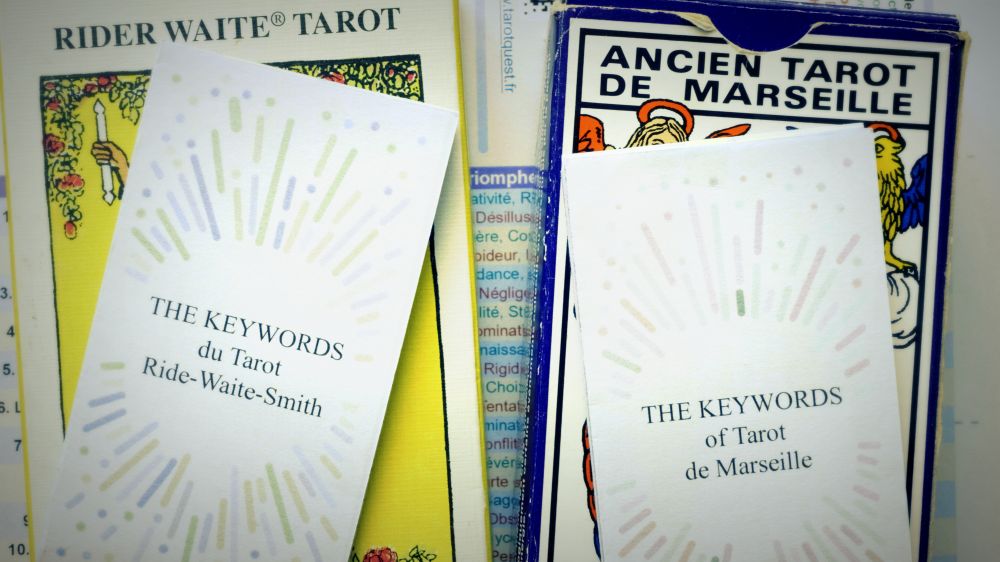
Key words for the 78 cards for the Tarot of Marseille and the Rider-Waite-Smith, to slip into your favorite deck. Your leaflets always with you, at hand, to guide you in your readings. Thanks to them, your interpretations gain in richness and subtlety.
The card XV THE DEVIL occupies a crucial place in the initiatory journey of the tarot. It follows the Arcane XIV TEMPERANCE and precedes the Arcane XVI THE TOWER. With TEMPERANCE, we explored the balance of "give-and-take" between "giving everything without receiving anything" and "receiving everything without giving anything". While TEMPERANCE represents a transitional phase between extremes, THE DEVIL embodies the second extreme where the individual receives everything without giving anything in return (cf. Temperance Card).
Classical Vision: Traditionally, THE DEVIL is associated with temptation, vices, and manipulation. The Devil is often seen as a tempter, an evil being who seeks to corrupt and dominate. Psychologically, this card represents blockages, dependencies, and self-destructive behaviors. It highlights the aspects of our psyche that are dominated by uncontrolled desires and egocentric behaviors. The Devil is often depicted as an evil being with chains holding his disciples, symbolizing domination and loss of freedom. He embodies the forces of temptation and corruption.
Personal Vision: THE DEVIL is not simply a tempter or an evil being. He represents a fallen child, an angel who has lost part of his innocence and acts out of whim and egocentricity. THE DEVIL sticks out his tongue, which can be interpreted as a childish and whimsical nature, seeking to appropriate the world without being fully aware of it. I see THE DEVIL as a symbol of alienation and childish egocentricity. He is not necessarily aware of his actions and has no bad intentions. He acts on a whim, seeking to get everything immediately, without consideration for the consequences of his actions. This card invites us to understand that in our quest to find our place in the world, we may unconsciously manipulate and control others. It is about understanding that alienation is not only external but also internal. It pushes us to realize the importance of balance and self-awareness. By recognizing our own egocentricity, our whimsical desires, and seeking to transform them, we can move towards deeper awareness (XVI THE TOWER) and inner balance (XVII THE MOON - XIX THE SUN - XX JUDGMENT).
| Symbolic interpretation | Right direction (Positive) | Celebration, Vitality, Magnetism, Charisma, Fascination, Attraction, Power, Cunning, Passion, Sensuality, Sexuality, Luxury, Wealth, Enjoyment | Reverse direction (Negative) | Dishonesty, Immorality, Enchantment, Lasciviousness, Enslavement, Intrigue, Fraud, Pride, Temptation, Impulse, Excess, Possession, Occultism |
| Psychological interpretation | Right direction (Positive) | Open, Available, Curious, Attentive, Receptive, Creative, Eloquent | Reverse direction (Negative) | Selfish, Cynical, Obsessed, Perverse, Lustful, Unrestrained, Greedy, Avid, Addict |
| Advice | |
| Free your impulses. Break your limits. Break the rules if necessary. Adopt others' values. But do not be dominated by your greed. Do not alienate your needs. Do not make a pact against your own nature | |
| Thematic Interpretation | Love | Passionate relationship. Sexfriend. Liberated morals. Domination relationship | Work | Creative work. Result through cunning. Lover at work. Obsession with promotion. Power or intrigue game | Money | Opportune transaction. Lucrative contract. Help with counterpart. Cheating. Fraud | Family / Friendships | Open and warm relationships. Common enrichment. Jealousy. Forbidden relationships | Health | Great vitality. Healing on track. Addiction. Excess. Psychological dependence |
| Divination / Prediction | Who ? | A mentor. A patron. A fraudster. An addict. A depressive person. A slave | Where ? | An agora. A parliament. The headquarters of an association. A secret society. A prison. A labor camp | When ? | A family meal. A meeting. A ceremony. Establishing a regulation. Signing a contract | How ? | By opening up to others, by understanding them. By exchanging with others, by convincing them. By sharing ideas |
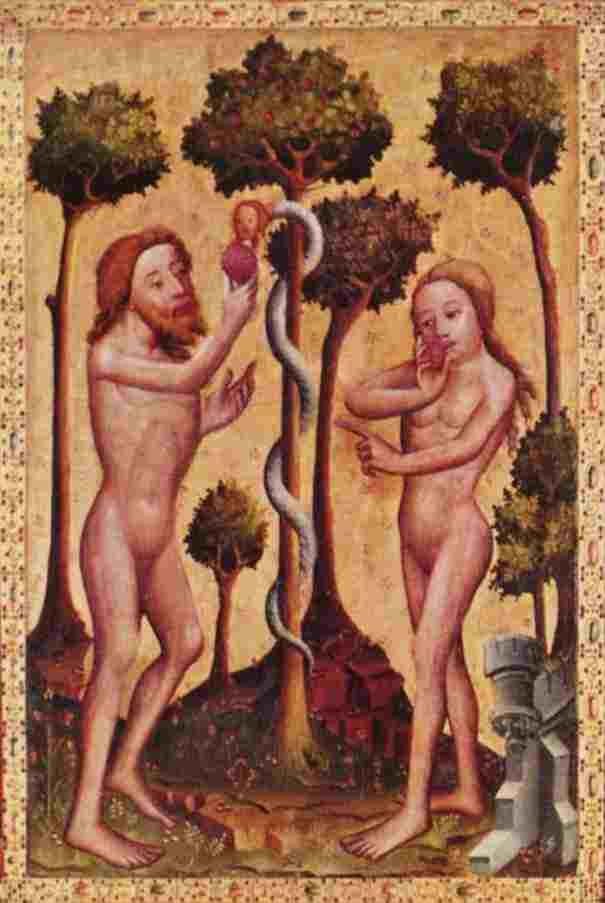
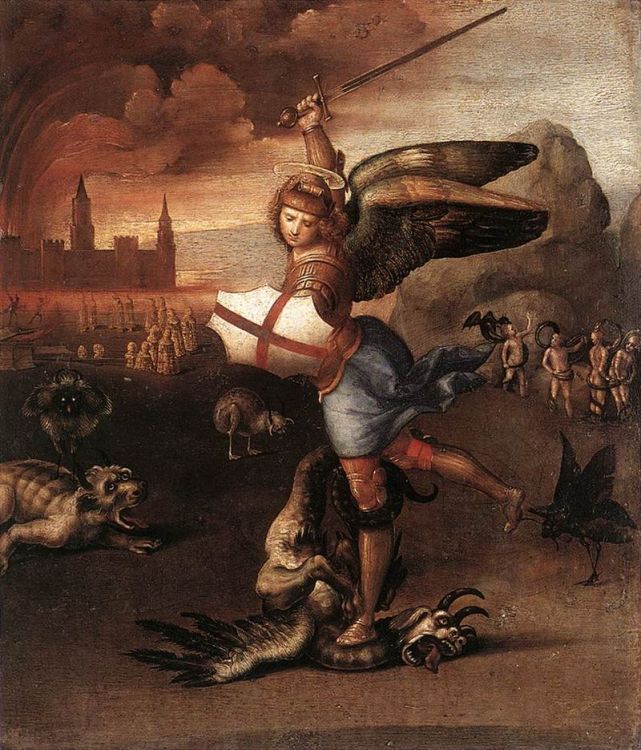
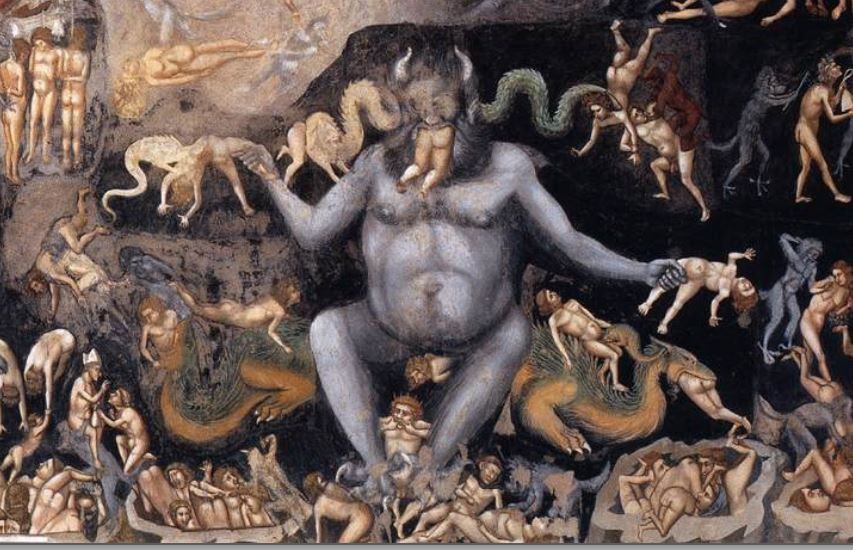
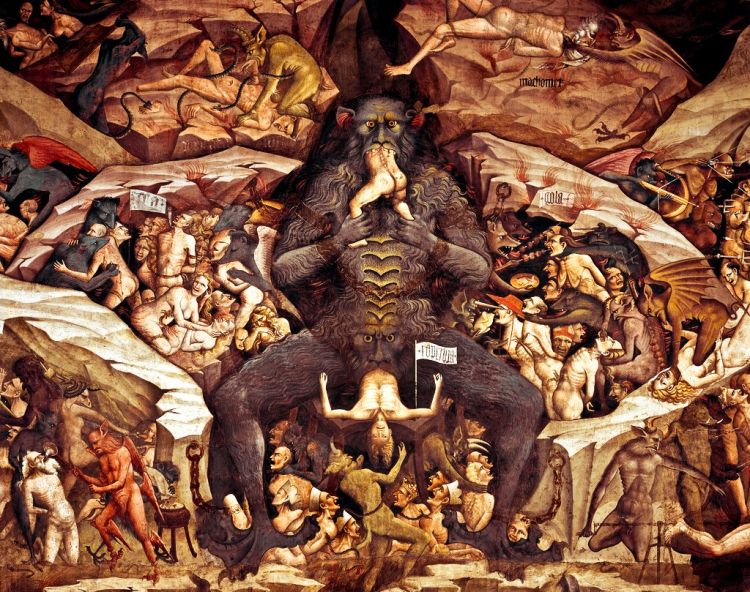
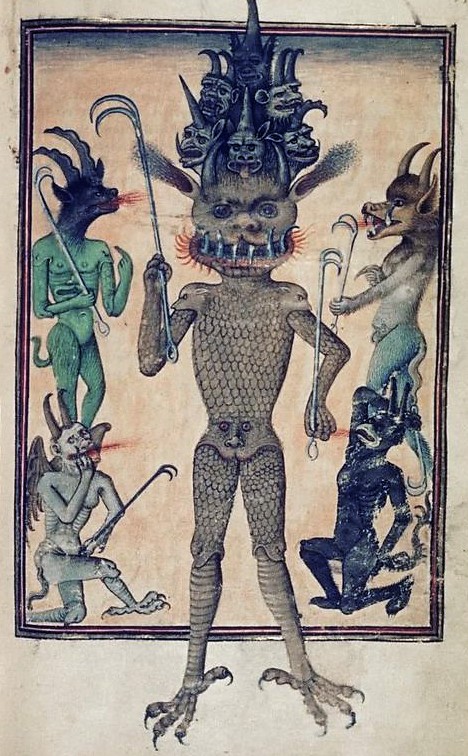
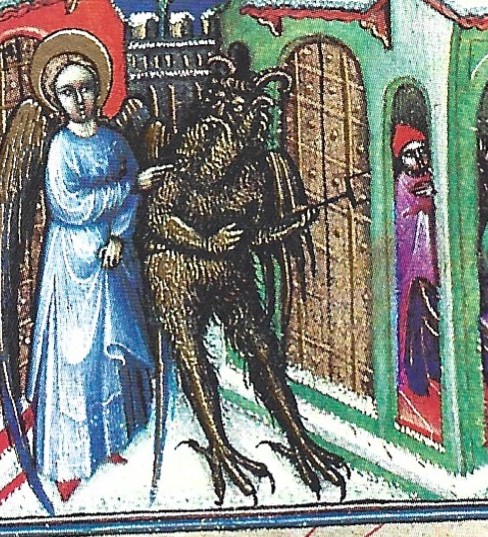
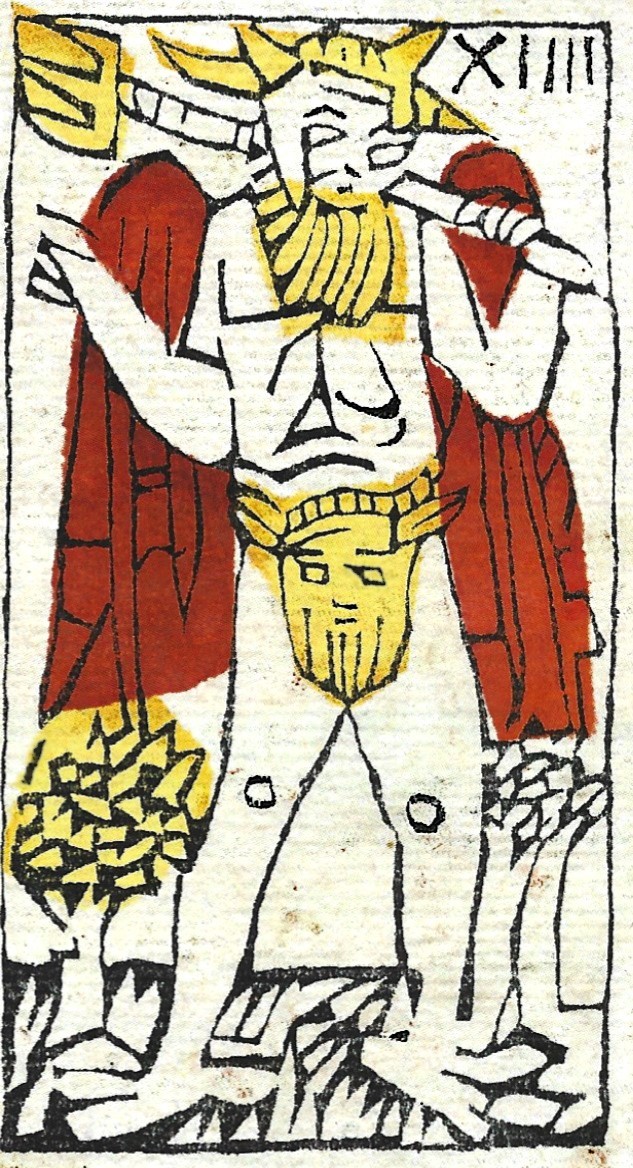
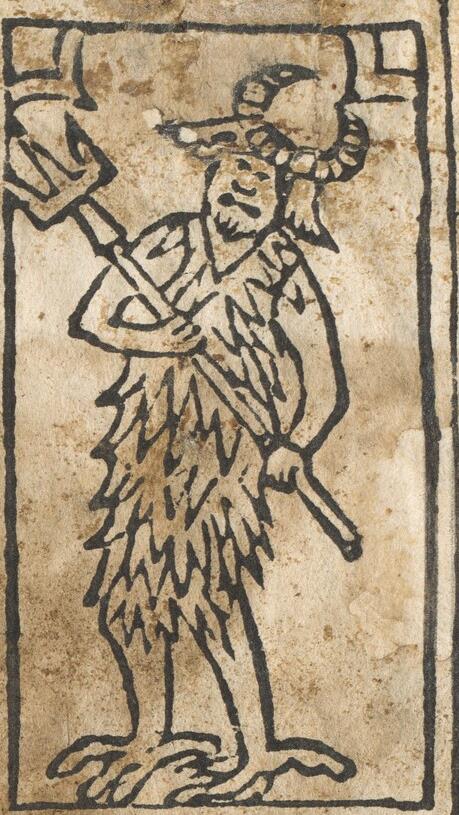
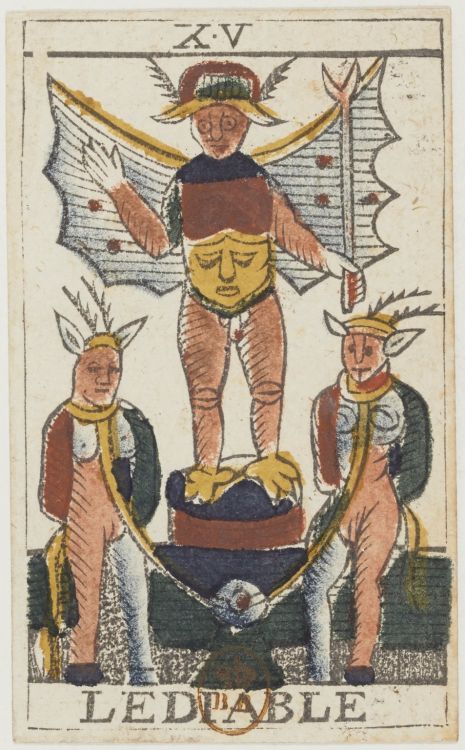
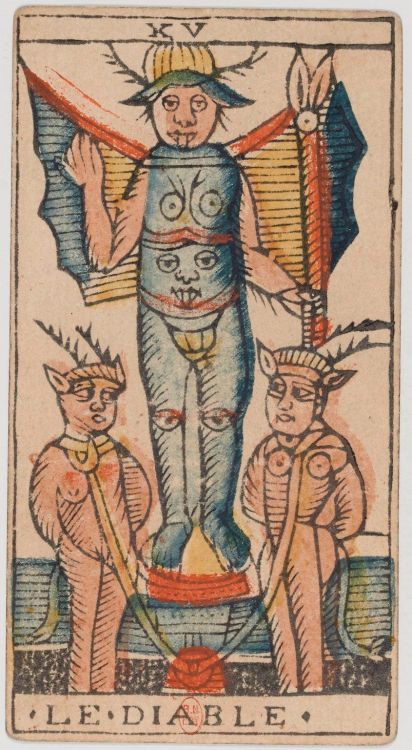
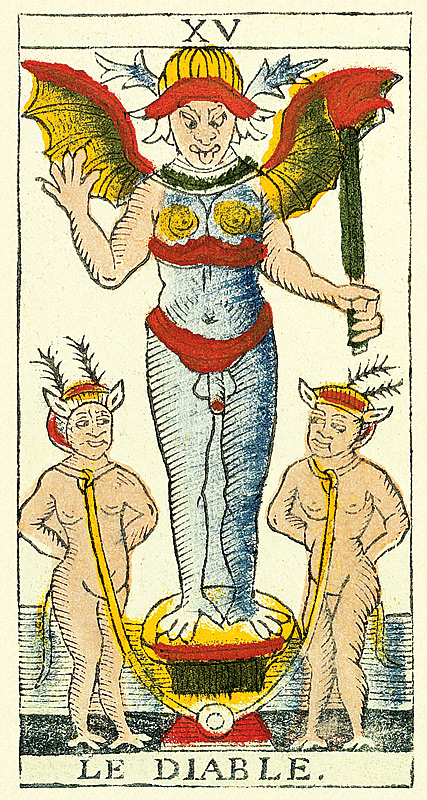
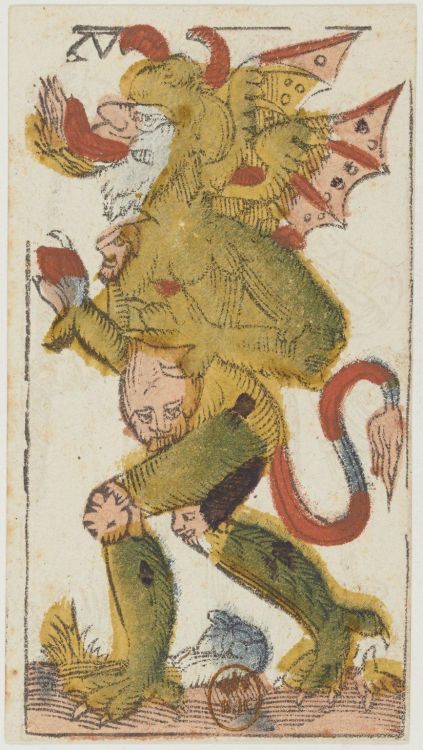
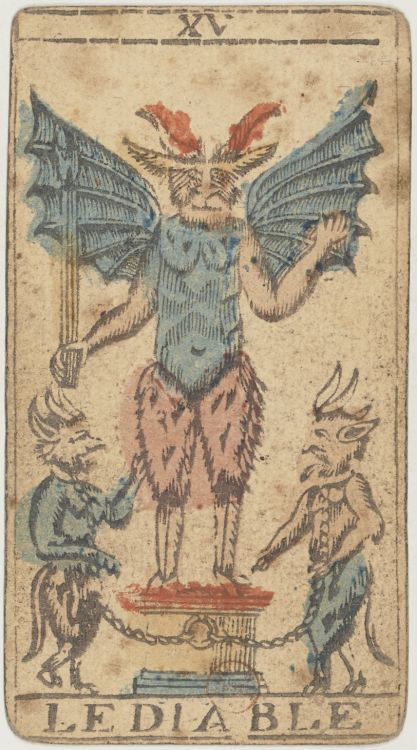
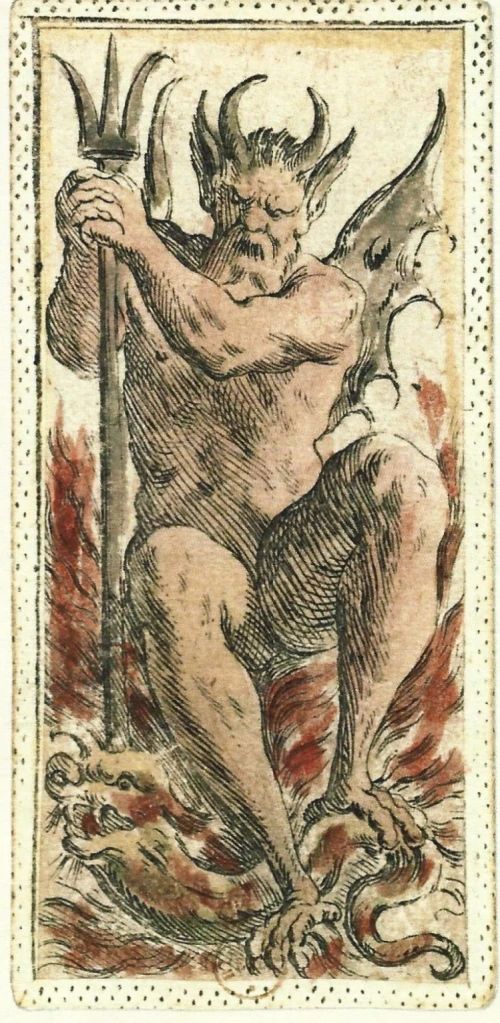
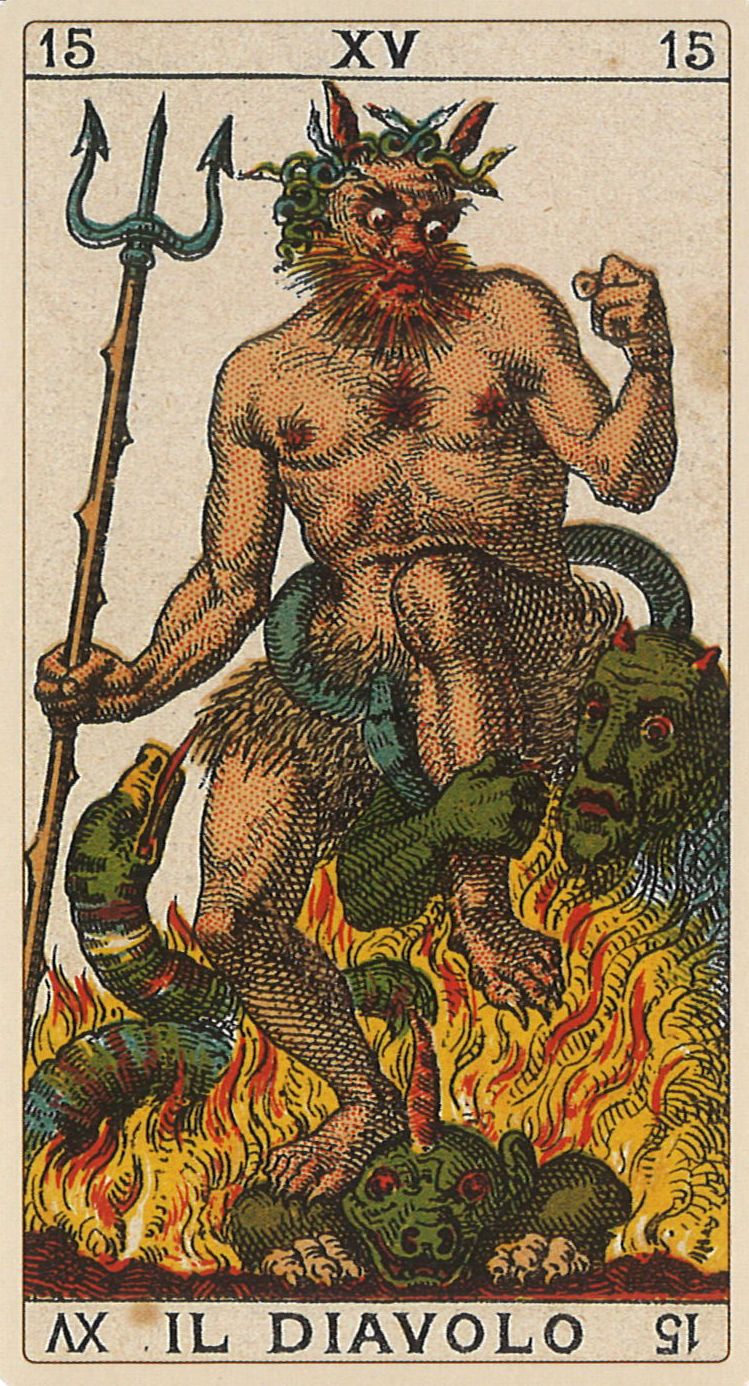
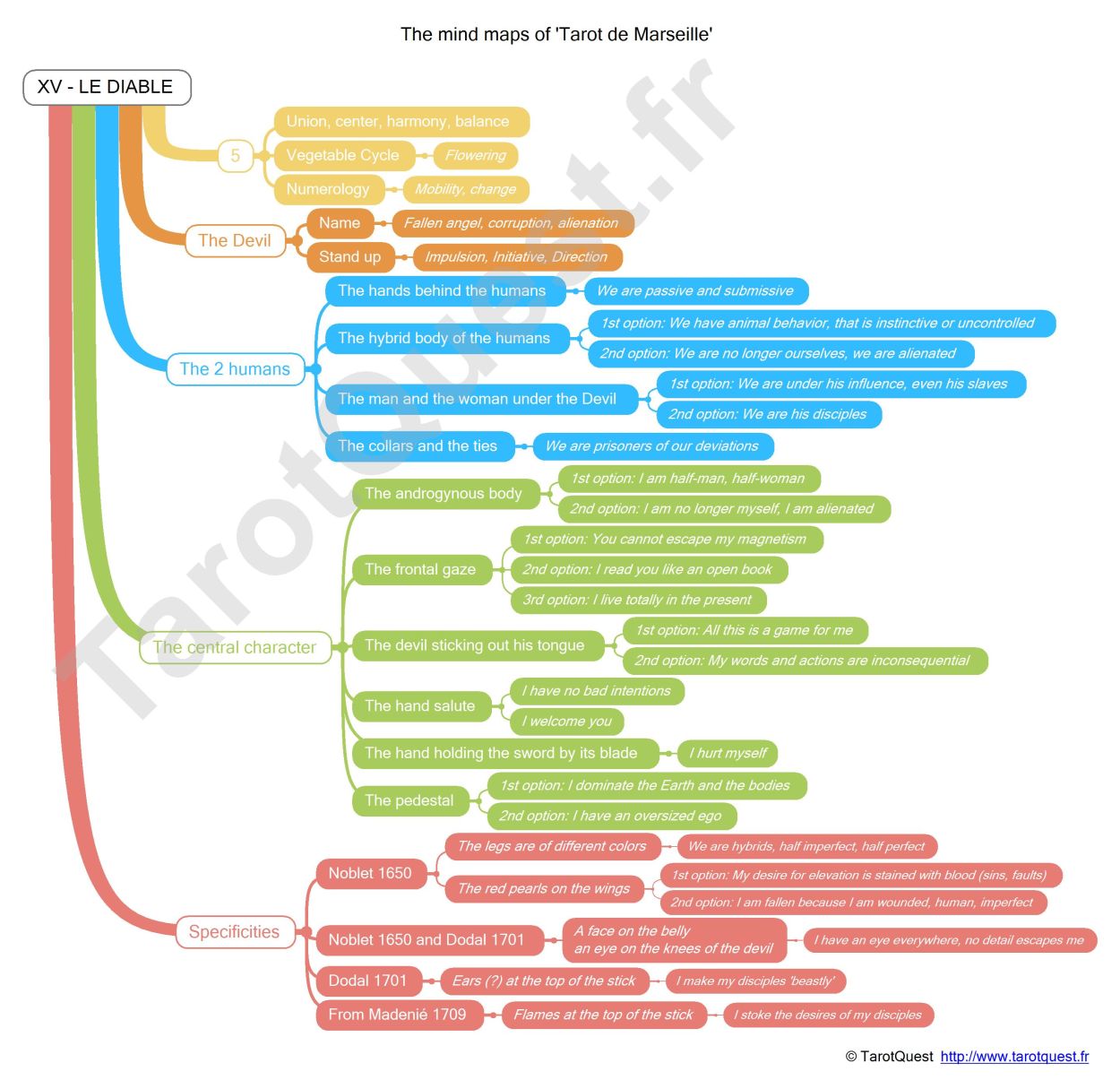
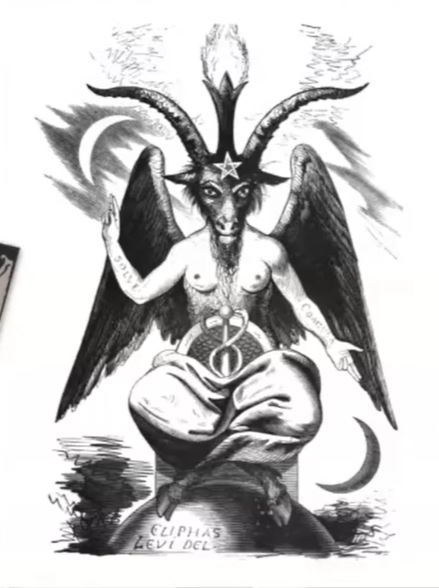
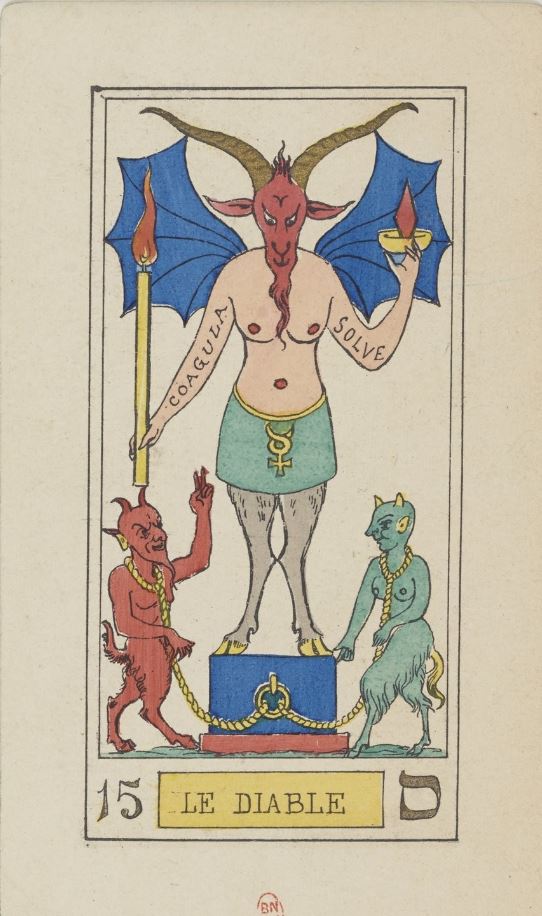
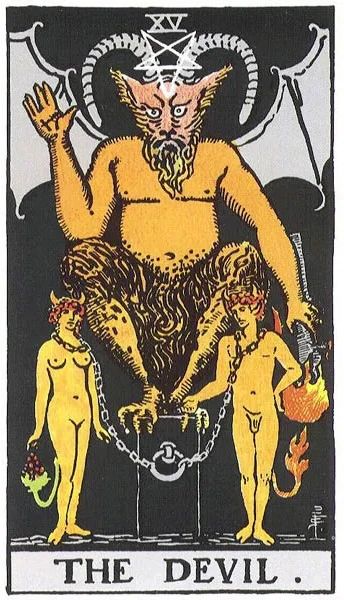
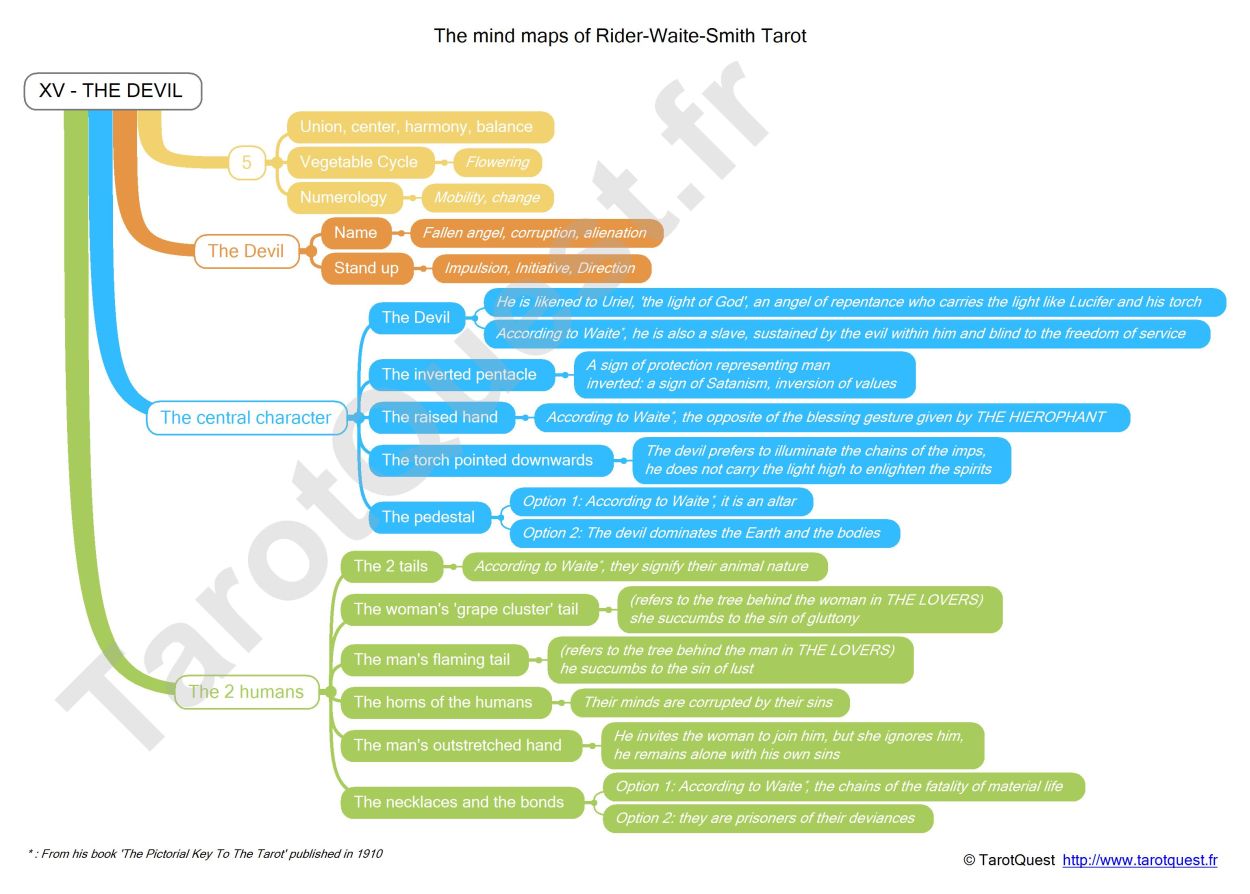
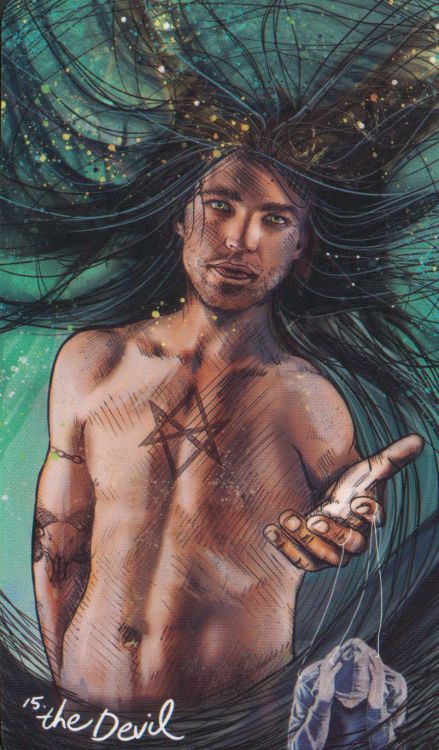
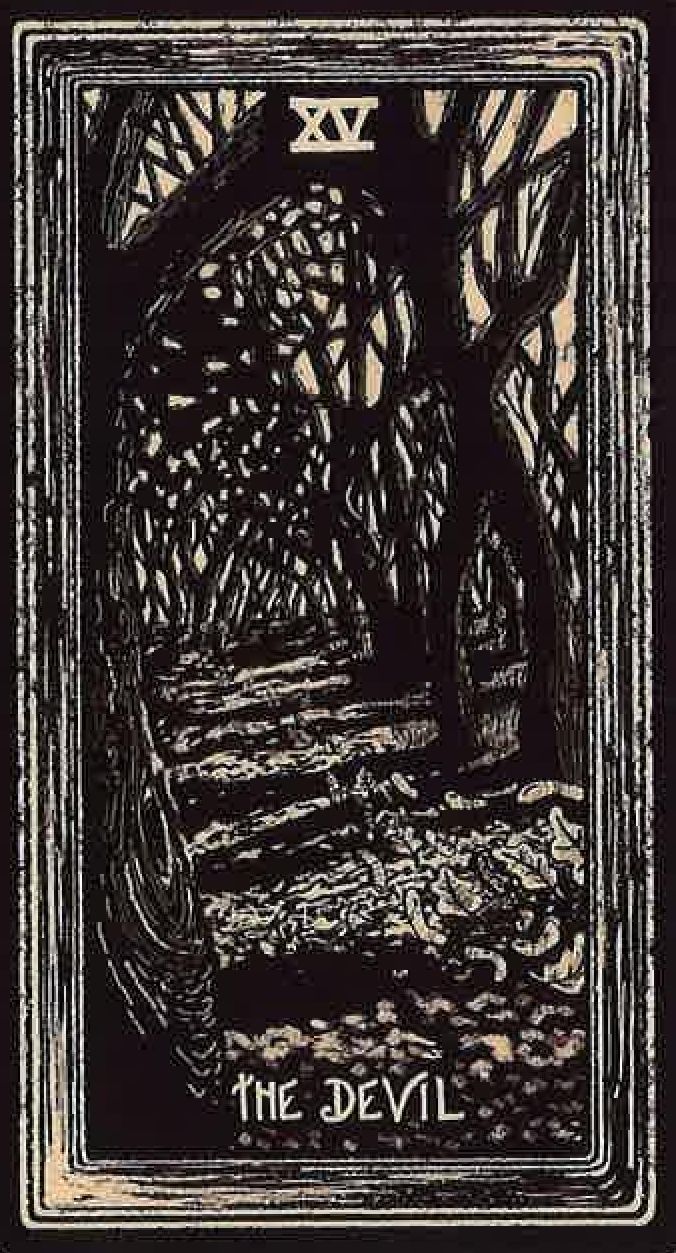
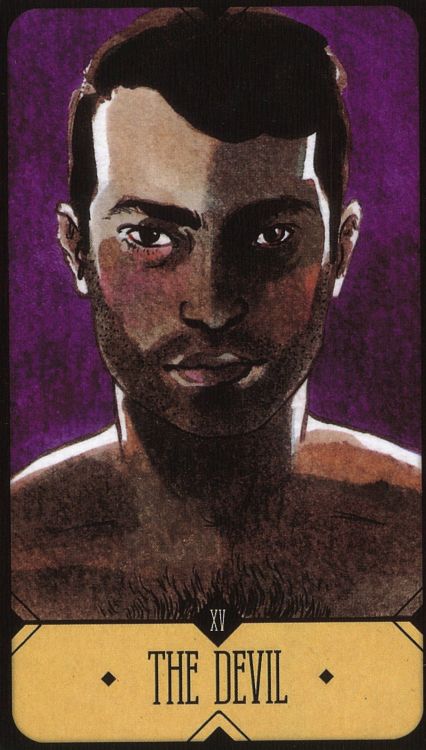
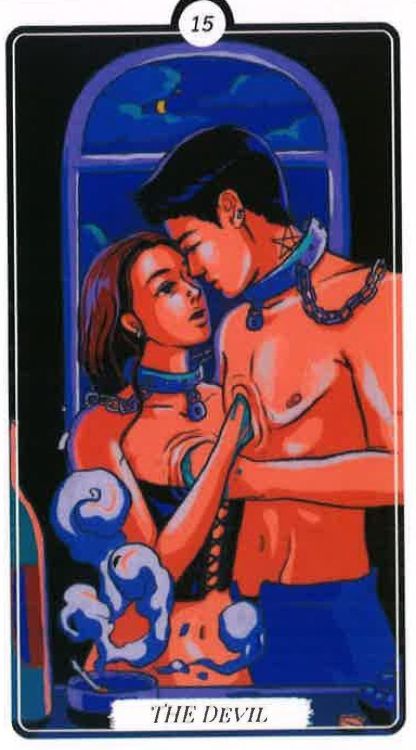
Copyright © TarotQuest.fr